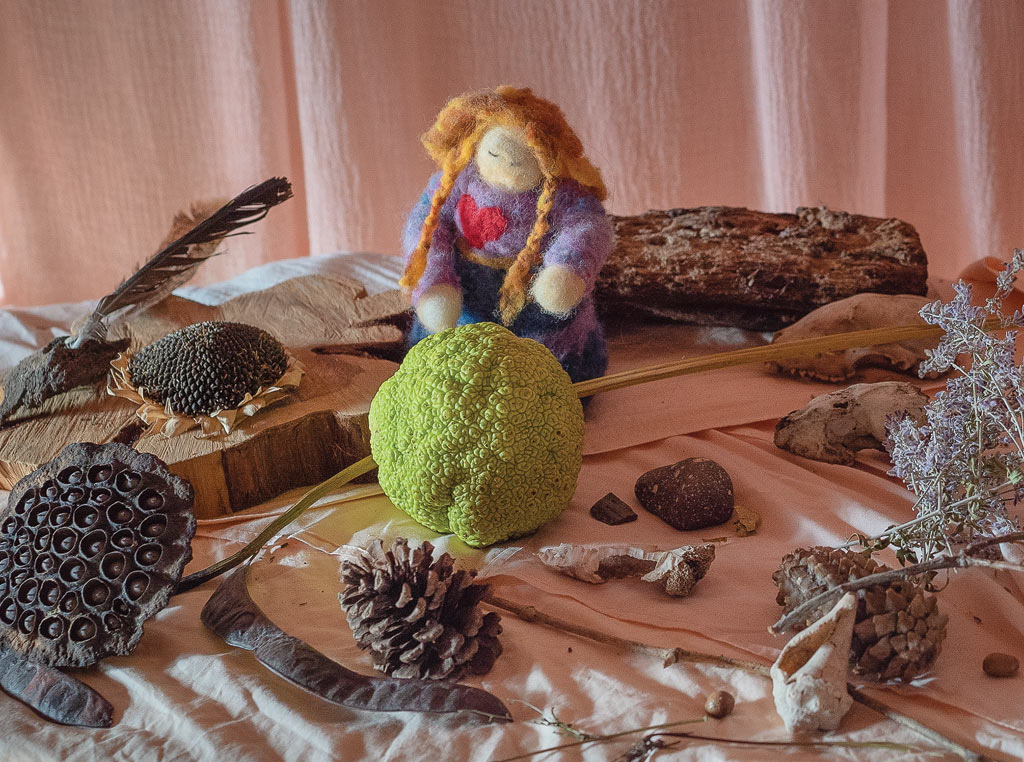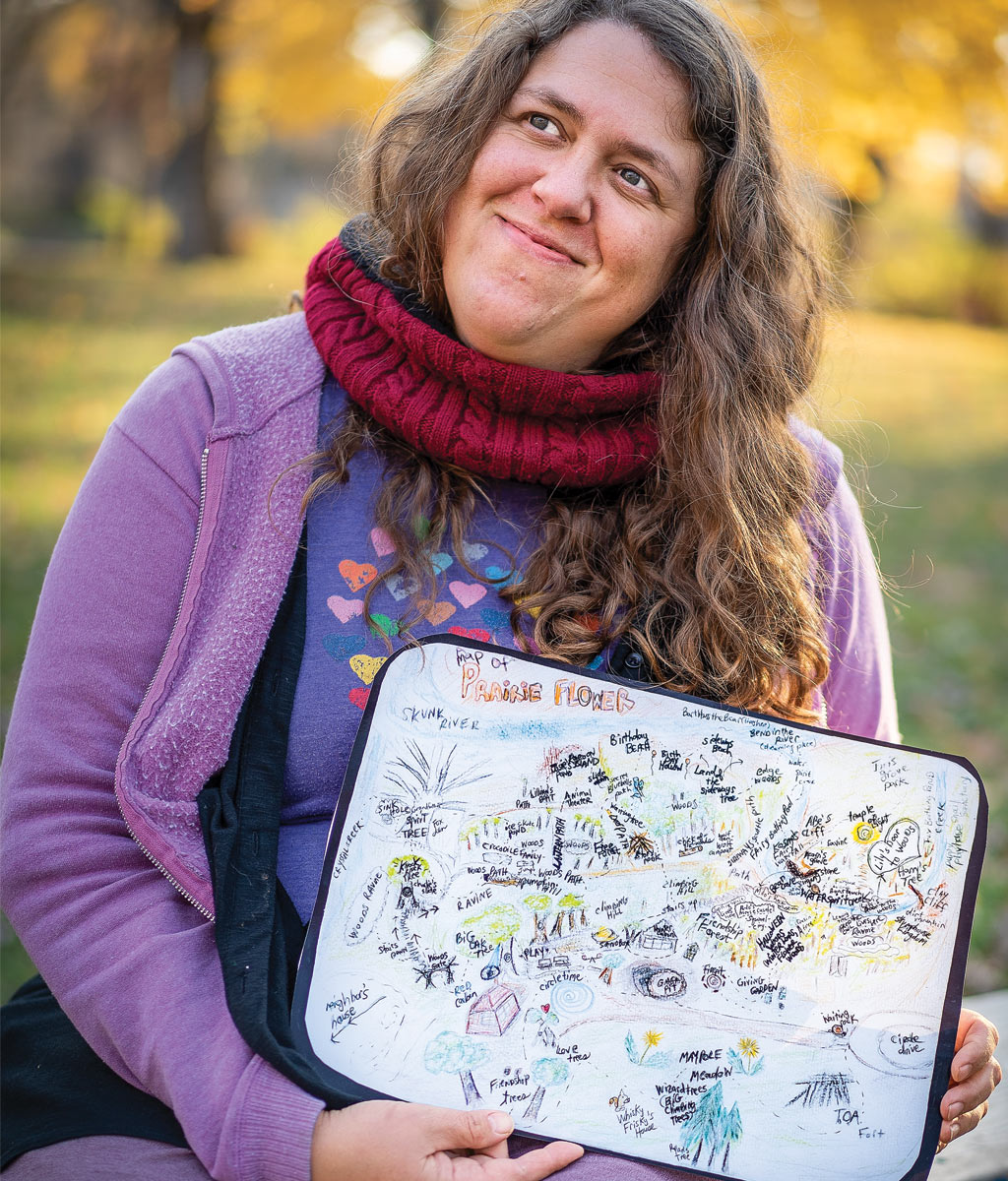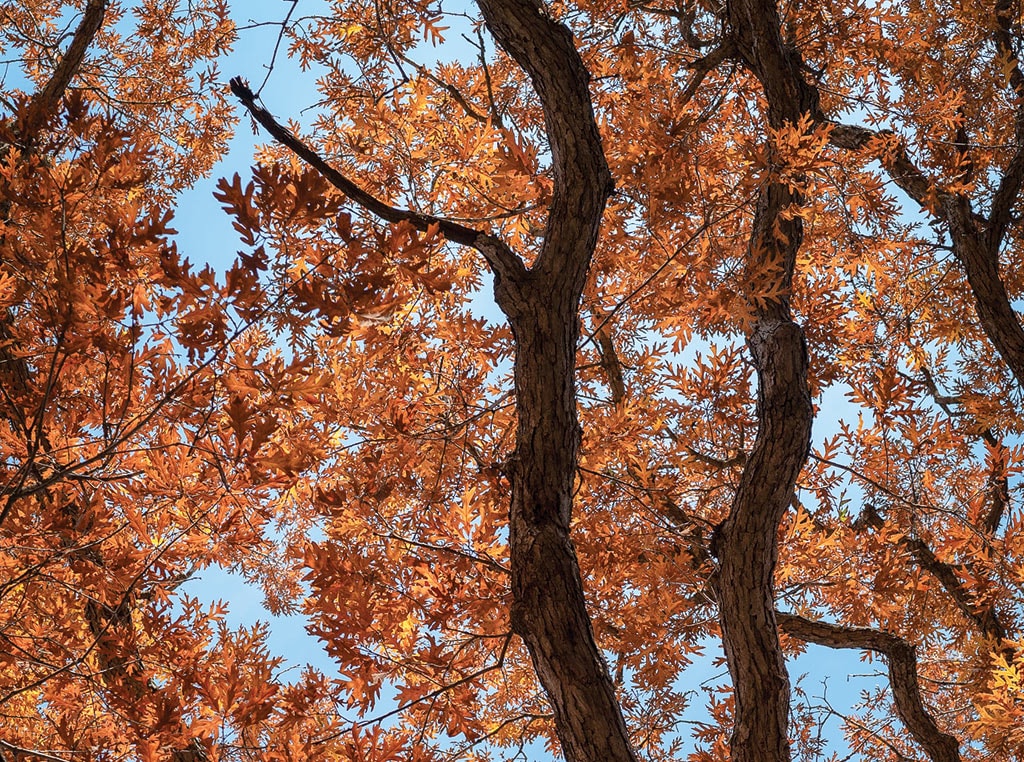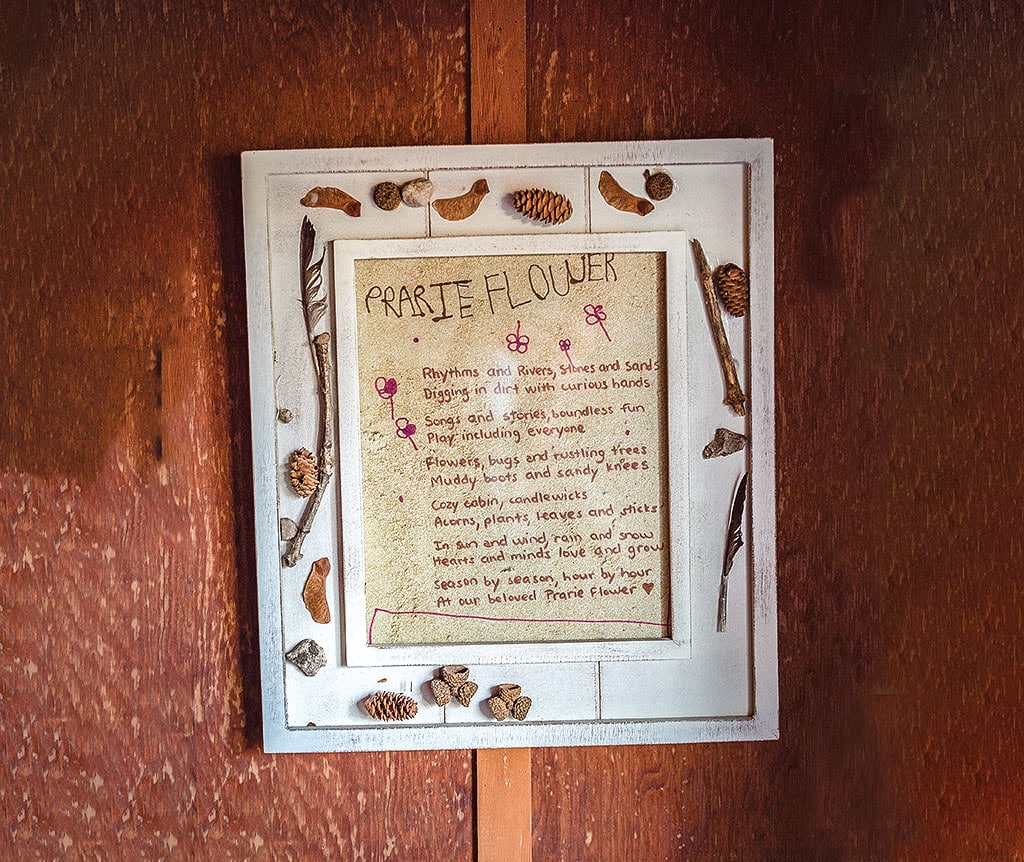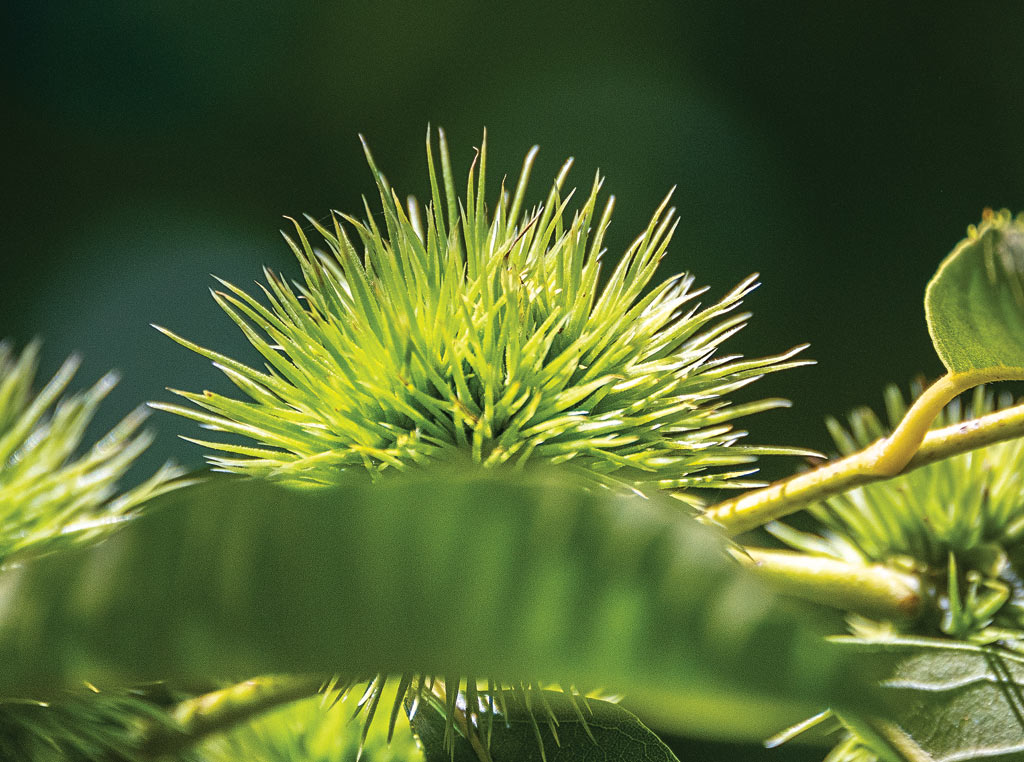Specialty/Niche, Education March 01, 2022
Mapping with Miss Blue
Blueberry Morningsnow helps kids connect to their favorite nature place.
There’s a map that Blueberry Elizabeth Morningsnow—known as Miss Blue to her students—keeps on her desk. It depicts the 14 acres of woods and ravines, rivers and sandbars that is home to Prairie Flower Children’s Center in Ames, Iowa.
But this isn’t a precision map. Rather, it is a map of whimsy, putting a name on places such as Lillian’s Boat, the Bend in the River, Land of the Sideways Tree, and the Fairy Bathing Pool. “We connect imaginatively to the places we play in the woods,” she says. And play can be serious business when it comes to early childhood development.
“Play is the work of childhood,” says Miss Blue. “The idea of learning through play in nature is ingrained in us as humans.”
Nature call. As the director and forest-school preschool teacher at Prairie Flower, Miss Blue oversees this nature-immersed, play-based early childhood education center that serves Ames and the surrounding communities. In addition to the preschool, mixed-age kindergarten, Prairie Flower offers a parent-child playgroup for children from 14 months to 3 years old as well as the Poemtree Nature Club for 5- to 12-year-olds.
Prairie Flower implements an alternative early childhood education model that integrates art, music, and movement in combination with something called a forest-school approach.
Homestead map. Miss Blue shared ideas about connecting kids with nature in a session during the 2021 annual meeting of the Practical Farmers of Iowa. She encouraged children attending the session to share a photo or piece of nature—something as simple as a leaf or a shell—from their own familiar field or forest.
Miss Blue also provided a template that helped children to begin drawing a map of their special place in nature. “I have always loved maps,” she says. “I think they develop a sense of belonging. The children have a special imaginative connection to that nature place now, which also leads to developing a sense of protection and love for it. That is certainly something we like to encourage in young children.”
Miss Blue may be onto something. There is a growing trend across the globe as parents are returning to the roots of early childhood education, seeking a low-tech approach that allows children to develop social and emotional skills along with academic pursuits.
Forest schools, developed in Scandinavian countries, now are finding popularity in North America. Many forest schools in Europe are based in woodlands around a central campfire, teaching outdoors in nearly all weather conditions. “There’s no such thing as bad weather, just bad clothing,” according to a Danish proverb.
According to academic research, this hands-on approach to learning fosters a child’s holistic development. Students learn teamwork, communication, cooperation, and problem-solving, while building spatial and motor development.
The forest school also encourages risk-taking, with the support of an instructor. For example, students may explore climbing trees, using tools, and perhaps even proper techniques to light a fire. Forest school advocates say risk-taking builds resilience and self-esteem in young people that will help to improve their judgment as they mature.
Above. A heavily wooded 14-acre property is home to Prairie Flower Children’s Center, offering central Iowa an alternative early-education model for children. The curriculum incorporates art, music, and movement in combination with the forest-school approach.
Place for beauty. Miss Blue agrees that the woods can be a place for risk—there is the occasional hornet’s nest, for example—but the rewards of being immersed in nature provide value beyond measure for a developing young mind. “We are now encouraging our kids to find a tree that they connect with,” she says. “They do bark rubbings in their sketch books, and they come back to the tree all year long. This is a way of encouraging them to become stewards of the land, to protect nature and to understand that it is part of them.”
There is another benefit to being “forest children,” the moniker that Prairie Flower students proudly wear. They get to experience the beauty of nature. “We have amazing Iowa ephemeral woodland flowers that grow in these ravines,” she says. “We are lucky to be able to get children outside in such beauty.” ‡
Read More
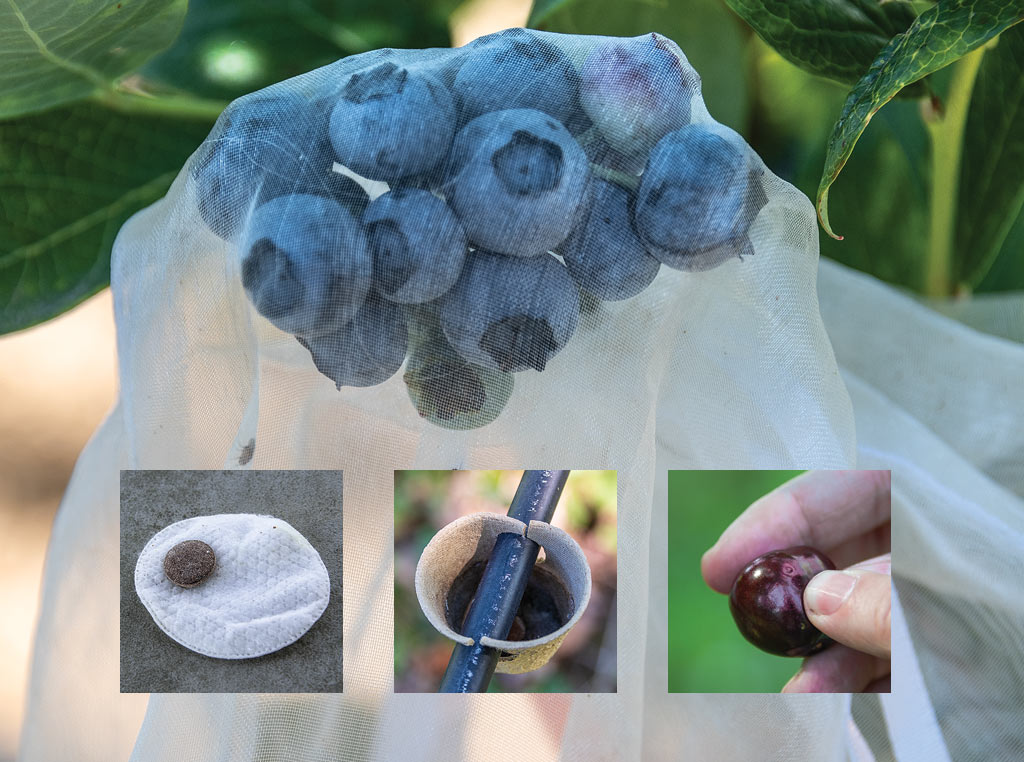
AGRICULTURE, EDUCATION
Following Their Noses
Innovative decoy cuts insecticide use dramatically.

